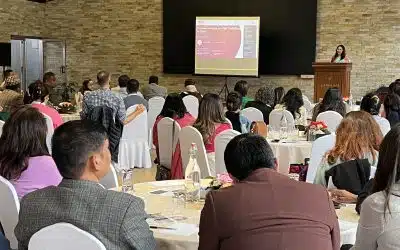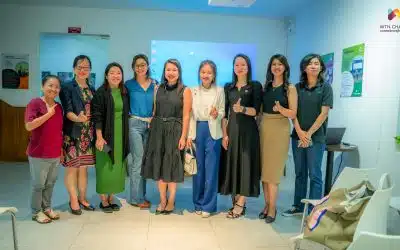InAsia
Insights and Analysis
A Cold Winter of Hunger Unfolding in the Heart of Asia
February 2, 2022
A cold winter of hunger is beginning to take its toll in Afghanistan. Last October, the United Nations Food and Agriculture Organization and the World Food Programme warned that nearly 23 million Afghans were on the verge of acute hunger. UNICEF has warned that half of Afghan children under five will suffer from severe malnourishment and appealed to the world for emergency support. The humanitarian crisis is compounded by the impact of Covid-19, a severe drought that has decimated farm yields, and an economic and banking collapse that has left the population in free fall facing a cold winter of hunger and despair.
It pains my heart to watch hunger unfolding in Afghanistan once again. When the international community imposed sanctions on Afghanistan in the late 1990s, I was in middle school. Our school was five miles away, and I walked 10 miles each day with an empty stomach. So it was for many children in rural areas. Our generation was malnourished. I cannot describe the pain, the despair, or the longing to survive a few days extra. The scars of malnourishment still haunt our generation, including me. What did the world achieve with those sanctions? What do we gain today by depriving a population, mainly children, willing to crawl for a loaf of bread? I am shivering in pain from these recollections as I watch hunger advancing once again in Afghanistan.

Seventy percent of rural women in Afghanistan work directly or indirectly in agriculture, but just 12 percent of all students in agricultural education are girls. (Photo: Yves Picq / CC BY-SA 3.0, via Wikimedia Commons)
Equally, depriving half the population of an education will serve no good. Afghan women and girls are hungry for skills and knowledge. As someone who taught girls in rural areas and in Kabul, I have witnessed their dreams of shouldering the burden of building Afghanistan. Afghan girls are distinctly aspirational; it would be a terrible mistake for the current government and the international community to abandon them and their aspirations, just as it was a mistake back in the 1990s. As distasteful as it may be to Western policymakers, we have to face reality on the ground.
One mistake we made in the past two decades was to focus too intently on theoretical education at the expense of hands-on, vocational skills. In a policy brief published by the Brookings Institution, I have recommended a new focus on agricultural education for young women and girls. Afghanistan’s National Growth Agenda of 2017 identified agriculture as the backbone of Afghan economic growth, and incorporating women into the formal agricultural sector as essential for that growth. Seventy percent of rural women work directly or indirectly in this sector. Girls learn agricultural skills informally from family and friends, but they make up only 12 percent of all students in agricultural technical and vocational education and training (TVET). Afghan girls are trapped in a system that limits their potential to develop their skills and use them effectively for national growth and self-reliance, and Afghanistan is trapped in a vicious cycle that creates dependence on foreign aid rather than investing in a major growth sector.
My policy brief examines the barriers to girls’ participation in agricultural TVET. A particularly formidable challenge is that parents, teachers, and even students consider agricultural education to be second-class, a point of view that is reinforced by policies and practices of the Afghan education system. But there are concrete ways to overcome these barriers and cultivate awareness among students, teachers, parents, and their communities that agriculture can be a first-class educational opportunity. Strategies include improving the quality of agricultural TVET, recruiting more female teachers who can serve as role models, and creating pathways to higher degrees within TVET and routes to successful careers for young women in the formal labor market.
In a survey, we found that 90 percent of female students at agriculture veterinary institutes (AVIs) expressed interest in pursuing a higher degree in applied agriculture, something that the existing system doesn’t offer. Further, 87 percent of female AVI students expressed a desire to become agriculture teachers. If the current government of Afghanistan mandates gender segregation in high schools and institutes, the current lack of female agriculture teachers for women’s classrooms will prevent thousands of young women and girls from pursuing agricultural education. Well before the fall of the Islamic Republic in August, The Asia Foundation’s Survey of the Afghan People found in 2019 that 43.2 percent of respondents identified lack of educational opportunities as the biggest problem facing women. These are challenges that national and international organizations can address together.

(Photo: Alejandro Chicheri / World Food Programme, public domain, via Wikimedia Commons)
In interviews with international donors, we learned that, since August 15, over 90 percent of technical and financial resources have drained from Afghanistan. This sudden exodus of support has resulted in a massive reduction in resources for the education sector that will reverse the tremendous gains of the past two decades and make vain 20 years of international investment.
There are ways to address the immediate need. First, teachers haven’t received salaries in months. They must be paid. The longer they go unpaid, the more likely they are to leave. Second, more female teachers must be trained to meet the rising demand for gender-segregated education. In some conservative, rural areas of the country, single-sex classrooms provide the only opportunity for a vast majority of girls to attend school. We must not let this rural potential go to waste. Third, education that focuses on applied skills to promote economic growth is a necessity for Afghanistan to move forward. Fourth, national and international organizations should work with private and nonprofit organizations to expand and improve education and skills training. Continuing support to private universities is especially important. And finally, national and international organizations should engage the Afghan diaspora to expand online education in local languages. A practical, people-centric imagination is needed to address the critical challenges on the ground in Afghanistan.
The future of girls’ education—and of TVET itself—has become highly uncertain since the Taliban returned to power in August 2021. My call to action is that we invest in building a society that will not go hungry, one where all girls can return to school—many in a sector that is a path to a productive and prosperous future. A humanitarian crisis of hunger in the heart of Asia illuminates the way forward: developing the agricultural sector with one of Afghanistan’s greatest natural resources: its people, and especially its women.
Nangyalai Attal is Founder of Hode, a nonprofit dedicated to advancing girls’ education in rural Afghanistan. He is an alumnus of the Echidna Global Scholars Program at the Brookings Institution and a 2016 Asia Foundation Development Fellow. He is currently pursuing a Ph.D. in international education at the University of Massachusetts, Amherst. He can be reached via Twitter at @NangAttal. The views and opinions expressed here are those of the author, not those of The Asia Foundation.
1 Comment
About our blog, InAsia
InAsia is posted and distributed every other Wednesday evening, Pacific Time. If you have any questions, please send an email to [email protected].
Contact
For questions about InAsia, or for our cross-post and re-use policy, please send an email to [email protected].The Asia Foundation
465 California St., 9th Floor
San Francisco, CA 94104
The Latest Across Asia
News
April 2, 2024
Program Snapshot
March 28, 2024
Program Snapshot
March 28, 2024
Program Snapshot
March 25, 2024

2024 Lotus Leadership Awards
Thursday, April 25, 2024, New York City
The Lotus Leadership Awards recognize contributions towards gender equality in Asia and the Pacific







The international community must step in and stop the tragedy unfolding before our eyes. Mass hunger and famine in Afghanistan must not be allowed to happen on our watch. The people of Afghanistan deserve better treatment after all they’ve been through the past decades. The central bank reserves need to be kept safe for the Afghan people—not tied to 9/11 compensation.